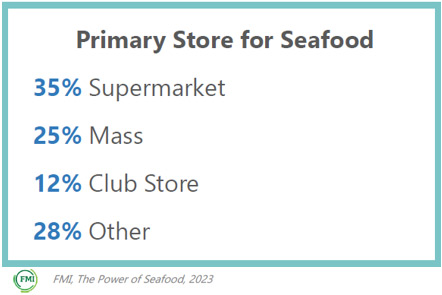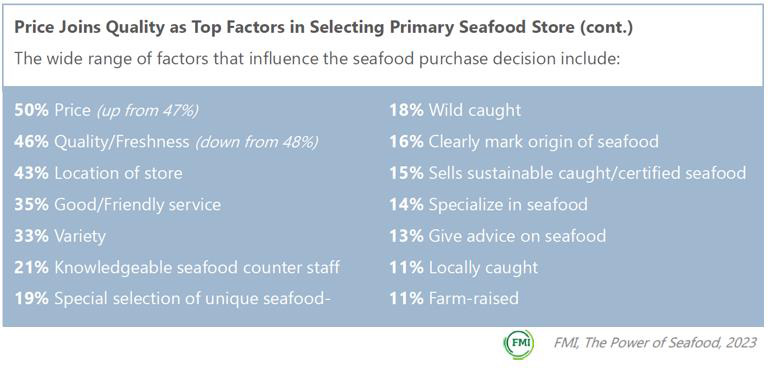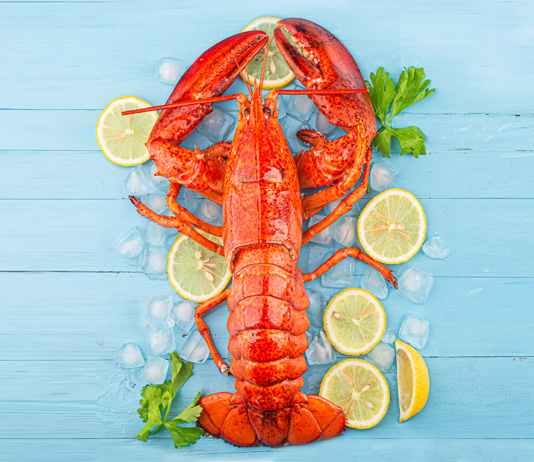Using data to help sell seafood from the ground up
If all proteins had the exact same price to the consumer, seafood would be preferred in up to 25% of all choices. Additionally, it can encompass many different varieties depending on your geographical location and consumer demographics. Also, many factors have influenced the consumer’s purchase recently and historically, with product quality leading the way, followed by taste or flavor, and price as well. Looking forward, seafood consumption is on the rise from a historical perspective, which puts retailers in an ideal position to accommodate this rising trend.
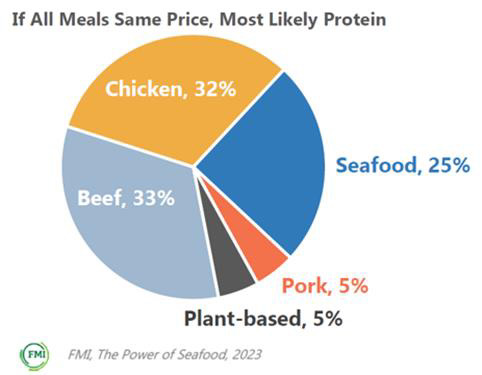
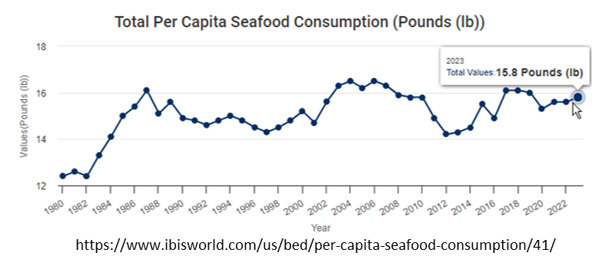

Variety is the spice of life (and seafood)!
Seafood can be a complex department and category, but you can still have a huge impact on your sales by displaying the most consumed and well-liked species. Shoppers desire variety! To keep things simple, let’s first look at product assortment to ensure the right items are being presented to your consumers from a broad spectrum. The Top 10 most consumed species in the U.S. have historically encompassed the same varieties year over year, varying only in average consumption climbing up and down the top of the chart due to other factors.
Shrimp maintains the top spot, followed by salmon. Tuna, tilapia, and Alaskan pollock round out the top five spots. Cod, crab, catfish, pangasius (swai), and scallops/clams, rounded out the top 10 species by per capita consumption in the U.S. With a proper representation of items and rotation of offerings, a retailer can develop a significant majority of their sales using this list. However, local favorites also play a big part of sales by geography and need to be part of your regular lineup on a day to day basis as well. So don’t forget to include the local tastes and favorites when planning your seafood layouts and promotions! Now let’s look at the varieties of items within each top 10 species to take full advantage of the variety and viability of seafood!
Shrimp examples – cooked, raw, breaded. or marinated, in multiple formats & sizes.
Salmon examples – Atlantic, Keta, Sockeye, etc, in all variations of fillets, portions and steaks, and value added!
Tuna examples – canned tuna(center store), tuna steaks, & tuna loins.
Alaska Pollock examples – fillets, additional processing becoming surimi (imitation crab), breaded fish sticks and portions, etc.
Tilapia examples – whole fish, fillets, & value added varieties.
Cod examples – loins, fillets, portions, & breaded variations.
Crab examples – Snow, King, Santolla, claws, legs, cakes, multiple sizes and variations.
Catfish examples – whole fish, fillets, nuggets, breaded etc.
Pangasius (swai) examples – fillets, value added, etc.
The Supermarket Home Field Advantage
Seafood consumers, both frequent and occasional, shop for most of their seafood at their primary grocery store. Is there anything better than having a built-in advantage in your favor? There is so muchto gain simply by becoming the hotspot destination for seafood variety and sales!
Through the pandemic, seafood consumers have honed their cooking skills and are more likely to prepare their own seafood. With budgets playing a large role in everyday life, seafood consumers are spending more time planning their grocery shopping and their meals. This is an advantage for any retailer that regularly promotes and stocks a variety of seafood on the sales floor, and poises the store to become a destination for seafood consumers of all frequency and tastes year round!
